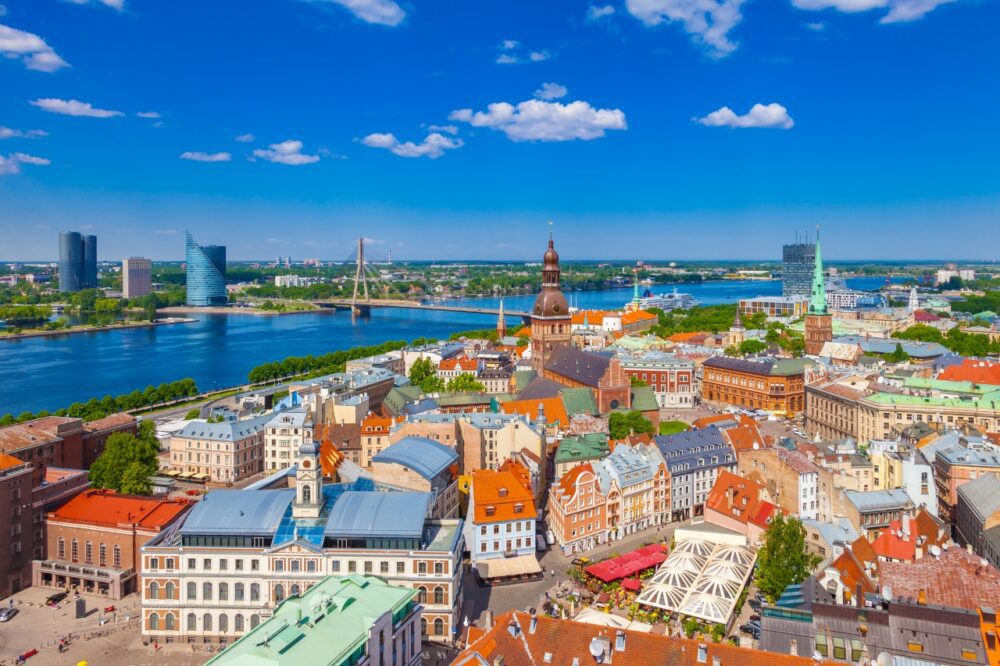
Is Riga worth visiting? Absolutely! The first time I strolled through the streets of Riga, I was struck by its stunning Art Nouveau architecture, vibrant culture, and welcoming vibe. From the charming cobbled lanes of the Old Town to the lively markets and riverside parks, Riga surprised me at every turn. Whether admiring the grandeur of the House of the Blackheads or enjoying a bowl of hearty Latvian stew, I quickly realised this Baltic gem is full of treasures.
As the capital of Latvia, Riga is a city where history and modernity meet. Known for its beautifully preserved Old Town—a UNESCO World Heritage Site—it’s a place that combines medieval charm with contemporary energy. Beyond the architecture, you’ll find buzzing cafés, innovative restaurants, and a thriving arts scene. And thanks to its compact size, Riga is a delight to explore on foot, making it easy to soak up its unique atmosphere.
But is Riga worth visiting for you? In this blog post, we’ll explore the top 10 reasons why Riga should be on your travel list, from its architectural beauty to its rich cultural scene. Plus, we’ll share travel tips to help you make the most of your time in Latvia’s captivating capital. Keep reading to discover why Riga is a city that deserves your attention.
Table of Contents
Pros – Reasons You Should Visit Riga
1. Stunning Art Nouveau Architecture
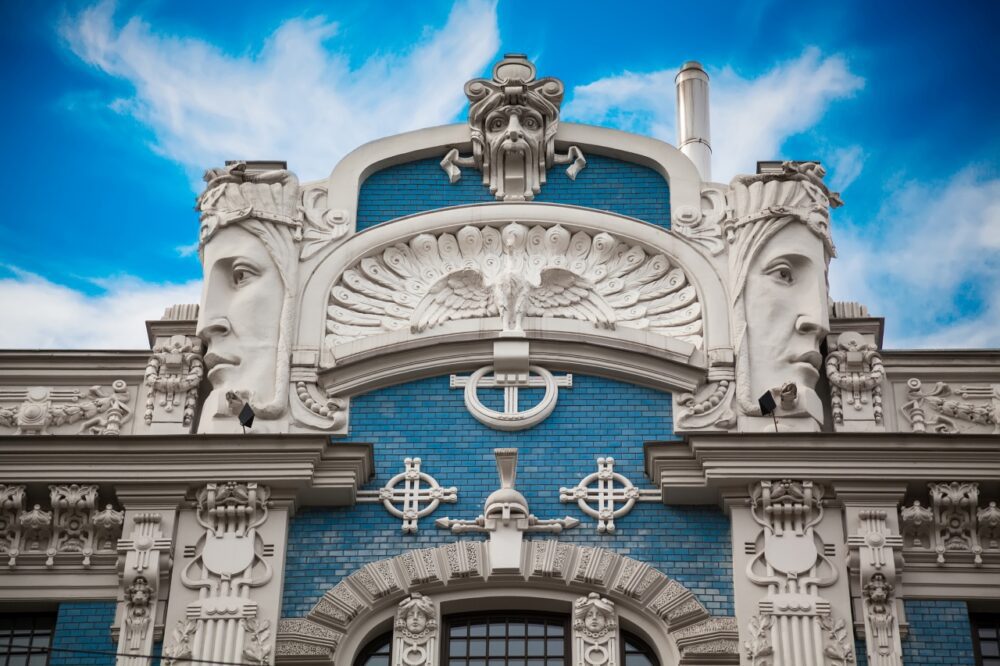
Riga is renowned for its Art Nouveau architecture, with over 800 buildings showcasing intricate facades, ornate details, and whimsical motifs. The Alberta iela (Alberta Street) is particularly famous, often called an open-air gallery of Art Nouveau design.
As I wandered down Alberta Street, I couldn’t help but marvel at the craftsmanship of the buildings, each one a work of art. Many house cafes and galleries, making it easy to soak up the atmosphere while sipping a coffee. If you’re interested in architecture, don’t miss the Art Nouveau Museum, which offers a deeper dive into this artistic movement.
2. Charming Medieval Old Town
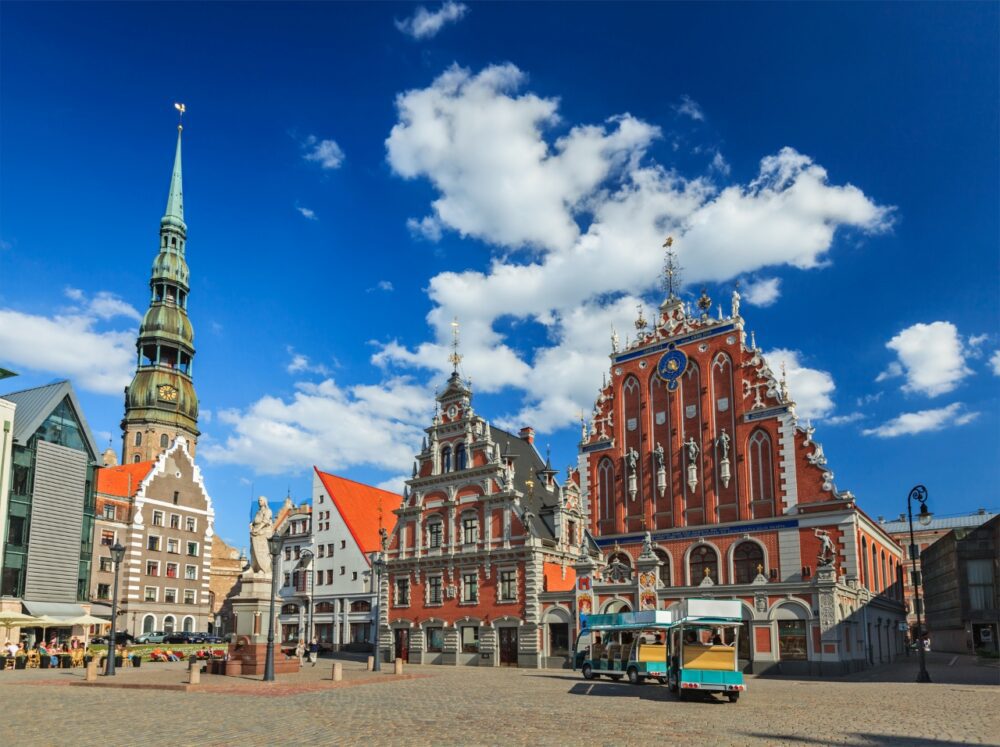
Riga’s Old Town is a UNESCO World Heritage Site, brimming with cobblestone streets, colourful buildings, and historical landmarks. Highlights include St. Peter’s Church, with its panoramic tower views, and the House of the Blackheads, a beautifully restored Gothic structure.
Walking through the Old Town felt like stepping back in time. I loved discovering hidden courtyards and lively squares, where street performers and cafes added to the charm. For the best experience, join a guided walking tour to learn about the city’s history and uncover its secrets.
3. Central Market and Culinary Delights
Riga’s Central Market, housed in former Zeppelin hangars, is one of Europe’s largest and liveliest markets. Here, you can sample local delicacies like smoked fish, dark rye bread, and Riga Black Balsam, a traditional herbal liqueur.
I spent hours exploring the market’s bustling stalls, tasting everything from freshly baked pastries to pickled vegetables. It’s a sensory feast and a great way to experience Latvian culture. Don’t be afraid to chat with the vendors—they’re often happy to share tips and stories about their products.
4. Scenic Riverfront and Parks
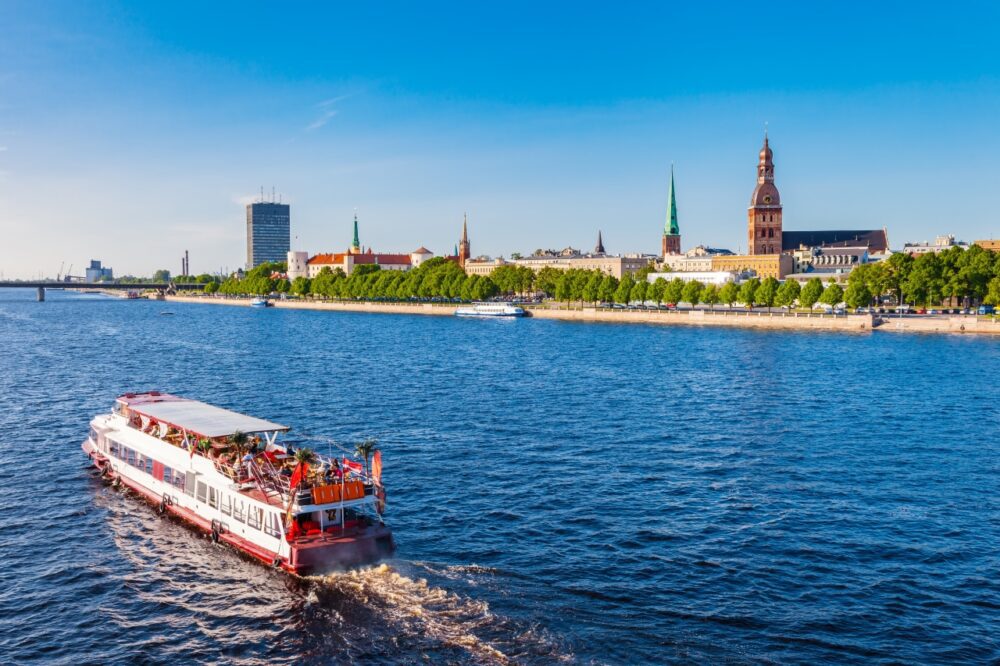
The Daugava River and Riga’s many parks provide a peaceful escape from the city’s hustle and bustle. The Bastejkalns Park, located near the Old Town, is perfect for a leisurely stroll or a quiet picnic.
I rented a bike and cycled along the riverfront, enjoying the fresh air and beautiful views. For a unique perspective, consider a boat tour on the Daugava River, which offers stunning panoramas of Riga’s skyline and landmarks.
5. Vibrant Arts and Culture Scene
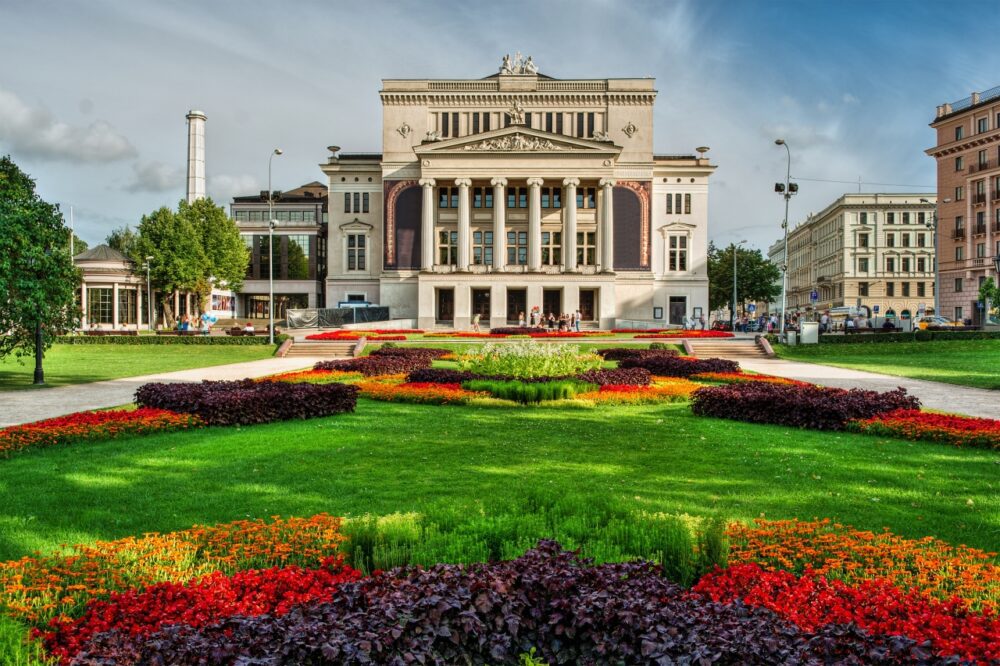
Riga is a cultural hub, with a calendar full of events, festivals, and performances. The Latvian National Opera is a must-visit for its world-class productions, while the city’s many galleries and museums cater to all tastes.
I attended a ballet performance at the opera house and was blown away by the talent and elegance of the production. For contemporary art, check out the KIM? Contemporary Art Centre, which showcases innovative works from Latvian and international artists.
6. Affordability
Compared to many Western European capitals, Riga is an affordable destination where you can enjoy quality accommodation, dining, and activities without breaking the bank.
I stayed in a boutique hotel in the heart of the Old Town for a fraction of what it would cost in Paris or London. Dining out was equally budget-friendly—I enjoyed a three-course meal with wine for under €20. If you’re travelling on a budget, Riga is an excellent choice.
7. Friendly and Welcoming Locals
Latvians might come across as reserved at first, but they are warm and friendly once you strike up a conversation. Many speak English, especially in Riga, making it easy to connect and get around.
I found locals to be incredibly helpful, whether recommending a hidden gem of a restaurant or explaining Riga’s tram system. Their pride in their city is evident, and their tips often led me to experiences I might have missed otherwise.
8. Rich History and Heritage

From its medieval origins to its time under Soviet rule, Riga’s history is layered and fascinating. The Museum of the Occupation of Latvia is a must-visit, offering a sobering yet insightful look at the country’s 20th-century history.
Walking along Freedom Monument, which symbolises Latvia’s independence, I felt a deep appreciation for the city’s resilience. For a more immersive experience, visit the Latvian Ethnographic Open-Air Museum, where you can explore traditional Latvian buildings and crafts.
9. Trendy Cafes and Nightlife
Riga’s cafe culture and nightlife are lively and diverse, catering to all tastes. From cosy coffee shops to stylish cocktail bars, there’s no shortage of places to relax or let loose.
I discovered MiiT Coffee, a trendy spot known for its excellent brews and vegan treats. At night, I headed to Aussie Pub, a popular bar with a laid-back vibe. For something more upscale, try Skyline Bar, which offers fantastic views of the city.
10. Easy Access to Jūrmala and Other Day Trips
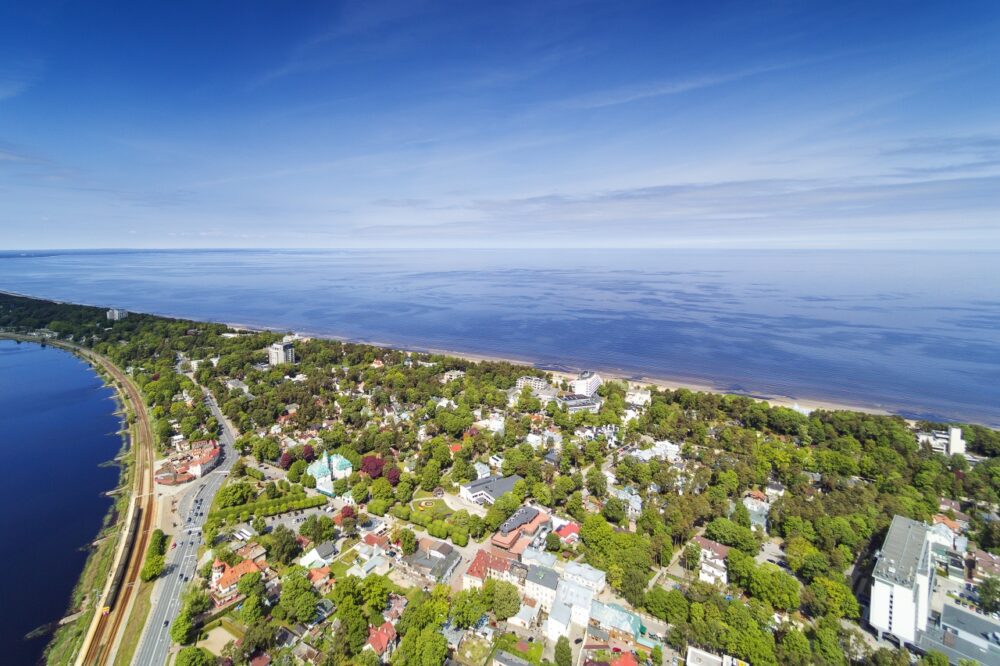
Riga’s location makes it a great base for exploring nearby attractions, such as the seaside resort town of Jūrmala or the medieval Cēsis Castle. Both are easily accessible by train or bus.
I took a day trip to Jūrmala and loved its sandy beaches and laid-back atmosphere. If you’re looking for a break from the city, these nearby destinations provide a refreshing change of scenery.
Cons – Things to Consider When Visiting Riga
1. Crowds in Peak Season
Riga’s charm attracts plenty of visitors, especially during the summer months. The Old Town and major attractions can become crowded, which might detract from the experience.
I visited in July, and while the energy was lively, navigating the narrow streets of the Old Town felt hectic at times. For a more relaxed experience, consider visiting in spring or autumn when the crowds are thinner.
2. Cold Winters
Latvia’s winters are long and cold, with temperatures often dropping below freezing. While Riga is beautiful under a blanket of snow, the chilly weather can make outdoor sightseeing less enjoyable.
I visited in late November, and while the Christmas markets were magical, I had to bundle up to stay warm. If you’re not a fan of cold weather, plan your visit for the warmer months.
3. Limited Accessibility
While Riga’s city centre is relatively flat, some parts of the Old Town have cobblestone streets that can be challenging for those with mobility issues. Public transport is available but not always accessible.
I noticed that while newer trams had ramps, many older ones didn’t. If accessibility is a concern, researching transport options and accommodations in advance is essential.
4. Language Barrier
While English is widely spoken in tourist areas, you might encounter a language barrier in local markets or neighbourhoods. Latvian is a unique and complex language, which can make communication tricky at times.
I used a translation app occasionally, particularly when ordering food or asking for directions outside the city centre. Learning a few basic phrases in Latvian, like “hello” (sveiki) and “thank you” (paldies), can help bridge the gap.
5. Limited Major Attractions
While Riga has plenty to offer, it’s a relatively small city, and you might find that two to three days are enough to see the main sights. If you prefer a destination with endless activities, Riga might not fully satisfy.
I spent three days in Riga and felt I’d covered most of the highlights. However, the city’s relaxed pace made it a perfect stop on a longer Baltic itinerary.
When to Visit Riga
The best times to visit Riga are spring (April to June) and autumn (September to October), when the weather is pleasant, and the city’s parks and Art Nouveau architecture look their best. These months also offer fewer crowds compared to summer. Summer (July and August) is lively, with warm weather perfect for enjoying Riga’s outdoor cafes and festivals like the Riga City Festival. Winters are cold but atmospheric, especially in December, when the city’s Christmas markets and festive lights transform the Old Town into a magical wonderland.
How to Get to Riga
Riga International Airport (RIX) is located just 10 kilometres from the city centre and is Latvia’s main gateway, offering flights from major European cities on airlines like airBaltic, Lufthansa, and Ryanair. From the airport, the 22 bus or the Airport Express minibuses are affordable ways to reach the city in about 30 minutes. Taxis and ride-sharing apps like Bolt are also readily available. Riga is well-connected by international buses, with services from Lux Express and Ecolines linking it to nearby capitals like Vilnius and Tallinn. Trains connect Riga to smaller towns, but they’re slower and less frequent than buses.
Where to Stay in Riga
Riga offers a range of accommodation options to suit every budget:
- Luxury: Old Town – Stay close to iconic landmarks like St. Peter’s Church and the House of the Blackheads. Top choices include Grand Hotel Kempinski Riga and Pullman Riga Old Town, offering five-star comfort and historic charm.
- Mid-range: Art Nouveau District – Perfect for those seeking stylish stays in a quieter area. Consider Monika Centrum Hotels or AC Hotel by Marriott Riga, both blending modern amenities with proximity to the city centre.
- Budget: City Centre – Affordable options like Riga Central Hostel and Mercure Riga Centre provide great value and easy access to public transport and attractions.
Getting Around Riga
Riga is compact and walkable, especially in the Old Town, where many of the main sights are clustered. For longer distances, the city’s Rīgas Satiksme public transport network, which includes buses, trams, and trolleybuses, is reliable and affordable, with tickets available at kiosks or via mobile apps. The tram system is particularly scenic, with routes passing through the Art Nouveau district and along the river. For a more active option, Riga has a bike-sharing system called Nextbike, which is ideal for exploring the parks or cycling along the Daugava River. Taxis and ride-sharing apps are widely available, but public transport is usually more cost-effective.
How Long to Spend in Riga
Three days is ideal for experiencing Riga’s highlights, including the Old Town, the Art Nouveau District, and the bustling Central Market, housed in converted Zeppelin hangars. This allows time to visit the Latvian National Museum of Art and enjoy a leisurely walk along the Daugava River. With an extra day, consider a trip to Jūrmala, a seaside resort just 30 minutes from Riga, or a visit to the Ethnographic Open-Air Museum, showcasing traditional Latvian rural life. Riga’s blend of history, architecture, and culture makes it a must-visit destination in the Baltics.
Conclusion
So, is Riga worth visiting? Absolutely! With its stunning Old Town, fascinating Art Nouveau district, and vibrant cultural offerings, Riga is a city that delivers on every level. Highlights like the House of the Blackheads, Riga Central Market, and the Daugava River make it a must-visit destination. While it’s smaller and quieter than some European capitals, its charm, affordability, and welcoming atmosphere make it a perfect city break. If you’re ready to experience the magic of Latvia, start planning your trip to Riga today—you won’t regret it!
